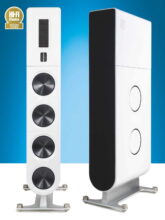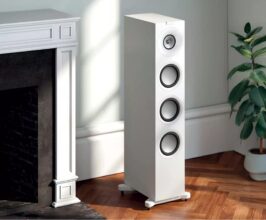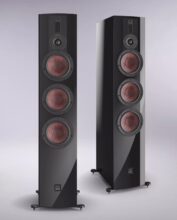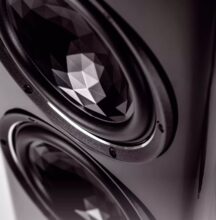Piega Premium 501 Wireless Gen2 Review
Piega has further developed its premium wireless speakers. The Gen2 series of wirelessly controllable active speakers includes three models. 7Review let the middle model, Premium 501 Wireless Gen2, perform. The slim Swiss beauty poured out a cornucopia of melodious sound.
By Lothar Brandt
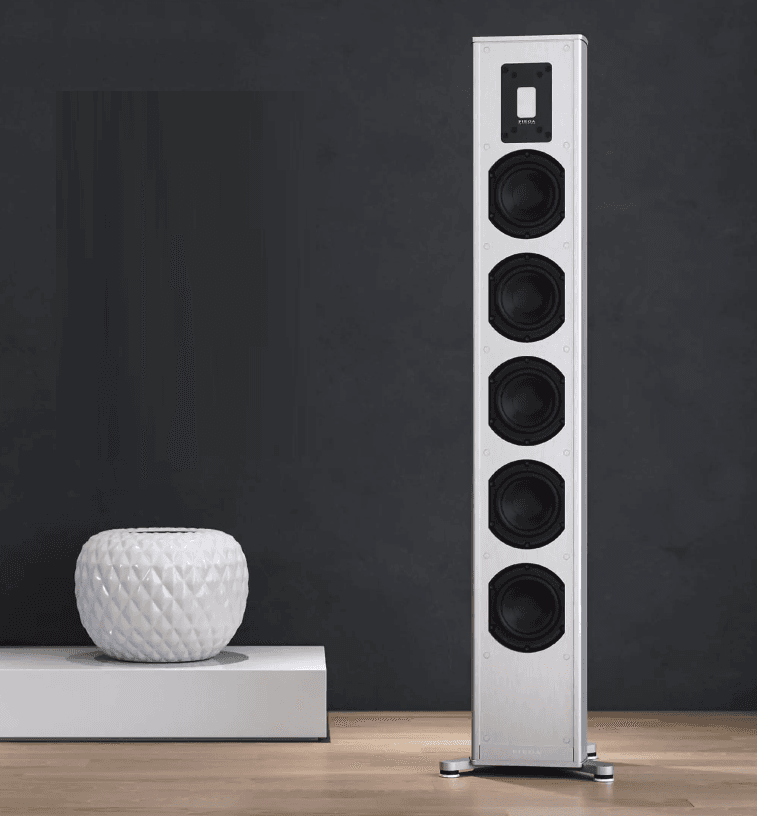
The name says it all. Instead of designating the further developments of their in-house active, wirelessly controllable speakers with a possibly old-fashioned “MKII”, Piega adds a “Gen2”, meaning second generation, to the Premium Wireless 301, 501, and 701. The compact Premium 301 Wireless Gen2 (pair price from $3,245) and the floor-standing speakers 501 ($6,545) and 701 ($8,250) are said to have made significant progress compared to the first generation.
After all, one can also associate “Gen2” with the new leadership generation. Quite peacefully, the founding fathers Kurt Scheuch (mainly responsible for technology) and Leo Greiner (commercial) handed over to successors a few years ago: Roger Kessler is now responsible for research and development and thus also for the technical equipment and the sound-defining tuning of the speakers from Horgen on Lake Zurich. And as for management, everything remains in the family: the Greiner sons Manuel and Alexander now have the helm.
WIRELESSLY HAPPY
The Generation 2 of the Premium Wireless (PW) series, from which we asked the middle model 501 to representatively play in the listening room and measurement lab, combines old and new. The external forms drawn by designer Stephan Hürlemann have remained. The excellently crafted housings, which taper so elegantly in a semi-elliptical shape towards the back, are made from extruded aluminum. The connection panel on the reverse side of all three Premium Wireless speakers does not accept speaker cables via the usual banana plugs or spade connectors, but instead features a power input (according to the two-pole “razor standard”), an analog RCA input (instead of the previous jack), plus a USB interface labeled “Service”. However, this has nothing to do with the useful signal, but only with the firmware.
But where does the signal for the onboard amplifiers come from if it doesn’t enter via the analog preamp input? Through the air, wirelessly. For this, there are two antennas in the speakers, one of them at the front behind the inconspicuous flap on the base. These receive according to the Bluetooth aptX HD standard. Lastly, the toggle switches for “Group” remain the same, allowing the PWs to be assigned to specific groups/rooms via color codes “White, Blue, Red” in multi-room applications. Furthermore, switches for use as right, left, or mono speaker, and for placement in the corner, on the wall, or free-standing. This room adaptation works very well and is practical.
(ALMOST) ESSENTIAL ACCESSORY
But it gets even better and more precise. 7Review strongly recommends purchasing the in-house hub Piega Connect Plus for $650 (hence the price indications “from”, and the housing versions in black or white also cost an additional $440 per pair). With this and the Piega Control App – soon available for free in Apple’s and Google’s stores – each Piega PW can be individually calibrated.
This little magic box also establishes the interface of the speakers to the wonderful world of digital and analog music and their sources with eight wired inputs. And via HDMI and Audio Return Channel (ARC) also to TV sound. Many users will appreciate the possibility of integrating moving images, where the Hi-Fi and TV/home cinema systems use (have to use) the same room. They will also sympathize with the “Night Mode”, with which the quiet passages can be made louder and the loud ones quieter in stages at a late hour. Whether the high-ender appreciates this or not: this is an extremely useful feature that saves a lot of button pressing on the remote control.
EXCELLENT EQUIPMENT
The pure music fans also get plenty. The Connect Plus supports streaming protocols Apple AirPlay, Google Chromecast, Spotify, DLNA, and Bluetooth 4.2, and is Roon Ready. A subwoofer can be integrated. The signal is now transmitted thanks to auto-band-switching at 2.4, 5.2, or 5.8 gigahertz (tri-band), optionally in three groups, the Connect can supply up to three pairs of speakers. Within the “KleerNet” with data rates of 24-bit/96 kHz to the speakers. On the input side, resolutions up to 24/192 are processed without issues.
But also at the backend, the PW series and thus the 501 Gen2 are excellently equipped. This 101 cm high, but only 16 cm wide and 21 cm deep three-way speaker delivers the low-frequency range to four 12 cm cones. These work in a closed cabinet. A significant difference to generation one, where two bass/mid drivers operated in a bass-reflex cabinet. In the Gen2, a fifth, equally sized cone processes the midrange exclusively. Piega gives these chassis the abbreviation MDS, standing for Maximum Displacement Suspension, along the quite long-throw path. The suspension from surround and centering promises maximum excursion without undue compression or distortion.
An old acquaintance is responsible for the high-frequency range: the LDR (Linear Drive Ribbon) 2642 (meaning 26 mm wide and 42 mm high). Introduced in 1993, it has existed for a long time in the second generation and thus carries the appendix MKII. It is certain: with it and the LDR 3056 used in the 701, Piega continues to build two of the best ribbon tweeters ever. On an aluminum foil stretched into a strong magnetic field, the conductor tracks are etched. When the signal voltage is applied, the membranes oscillate – music sounds. All this is not trivial in terms of manufacturing technology and is still built by skilled hands in Horgen.
The switching amplifiers of the fully active speakers with their powerful switching power supply really provide power with 180 watts. When they start pumping a bit too much into the chassis, a clever limiter circuit within the Digital Signal Processing (DSP) kicks in. This protects the chassis, especially in the frequency ranges that stress them the most. This makes the 501 subjectively play much louder than one might have initially expected from the slim beauty.
FASCINATING SOUNDS
For the Swiss supplement of 7Review and 7Review SWISS, the author had already been allowed to listen extensively to the 701 Gen2 in Piega’s demo room in Horgen (Q2/23). The little sister proved to be no less fascinating in the 7Review listening room. And not only at loud levels. Even at moderate volumes, the wonderful homogeneity was impressive.
The author was more than happy to fish out all kinds of voices from the streaming offerings or have them fed in from the CD player. The truly wonderful Swiss soprano Regula Mühlemann could captivate with her “Fairy Tales” just as much as the exceptional rock singer Steve Lee from Gotthard, born in Horgen and unfortunately passed away far too early in 2010. Exemplarily neutral (!) the Swiss speakers depicted colors and nuances – also of the accompaniment, from the most delicate violin pastel to the hardest rock full-fat level.
Naturally, the Swiss showcase pop magicians Yello could not be missing. Whether with the rousing “The Race” or the still brilliant “I Love You” – it really got going there, with astonishingly deep-reaching basses: Here, a cornucopia of strong sounds poured forth. High-end has arrived in the world of wireless speakers. And the second generation of Piega’s Premium Wireless contributes significantly to this.
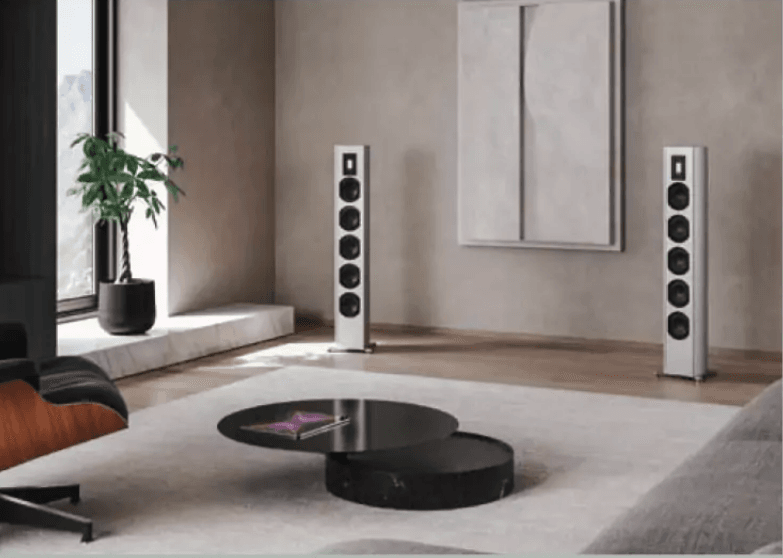
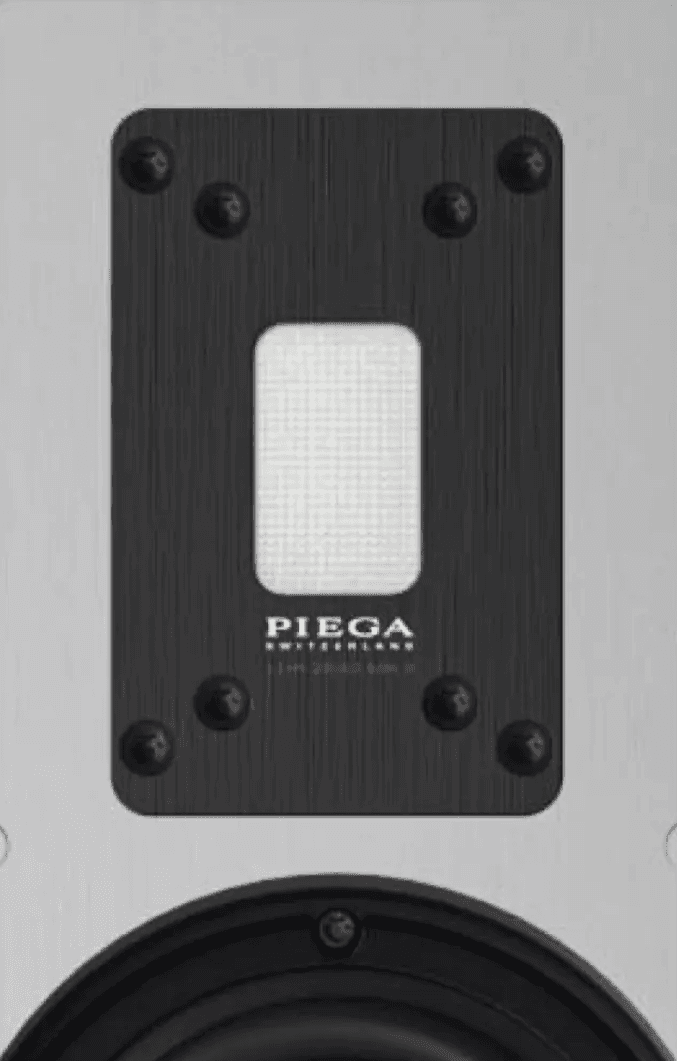
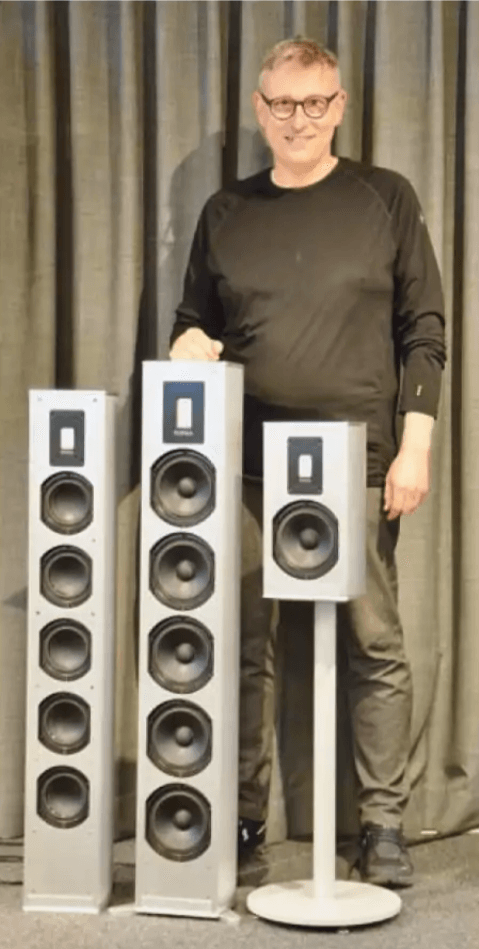
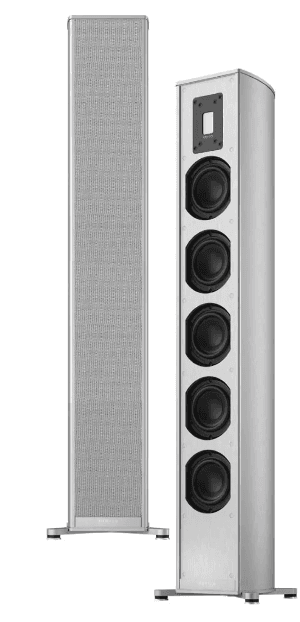
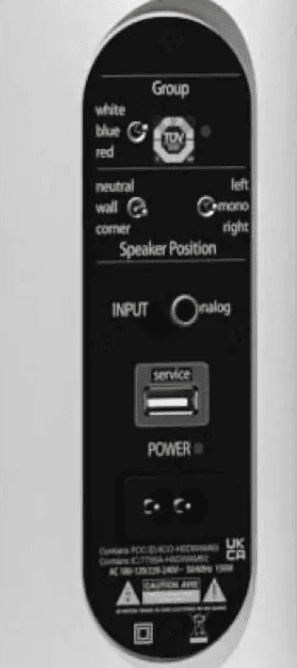

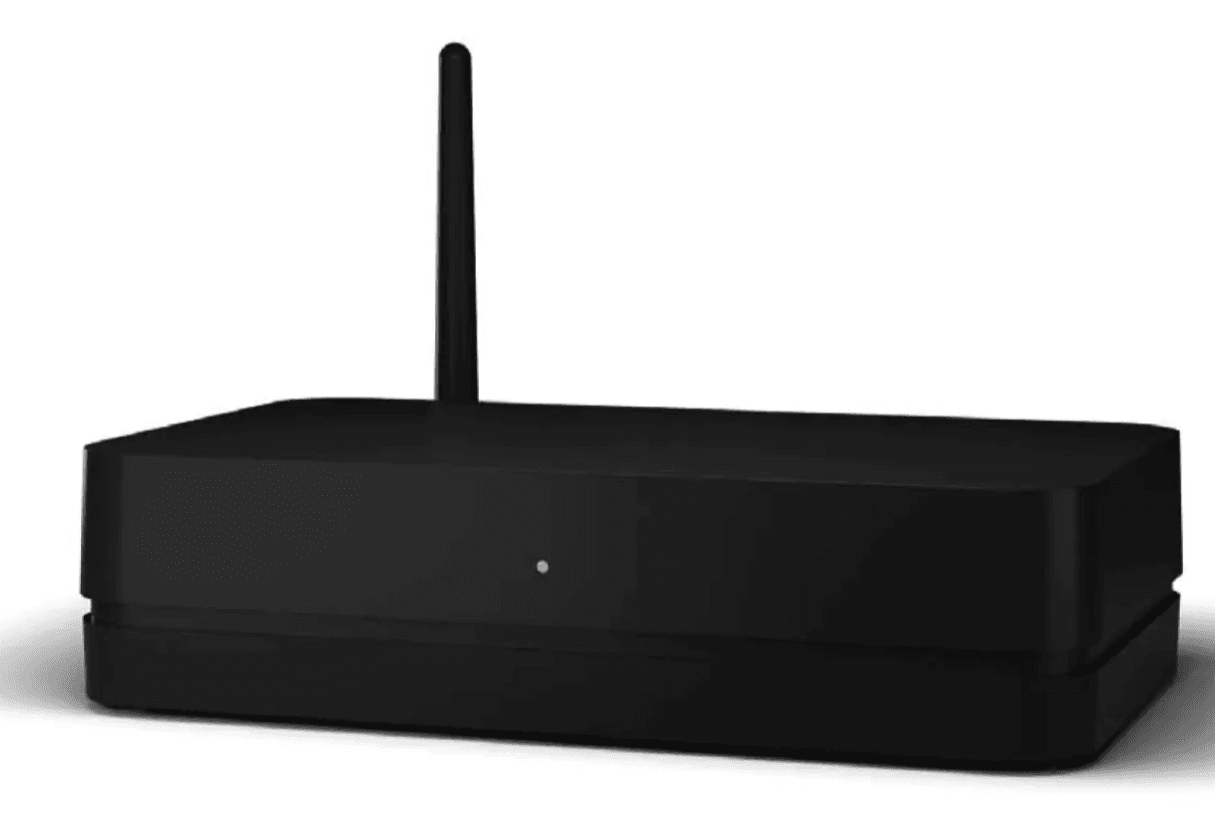
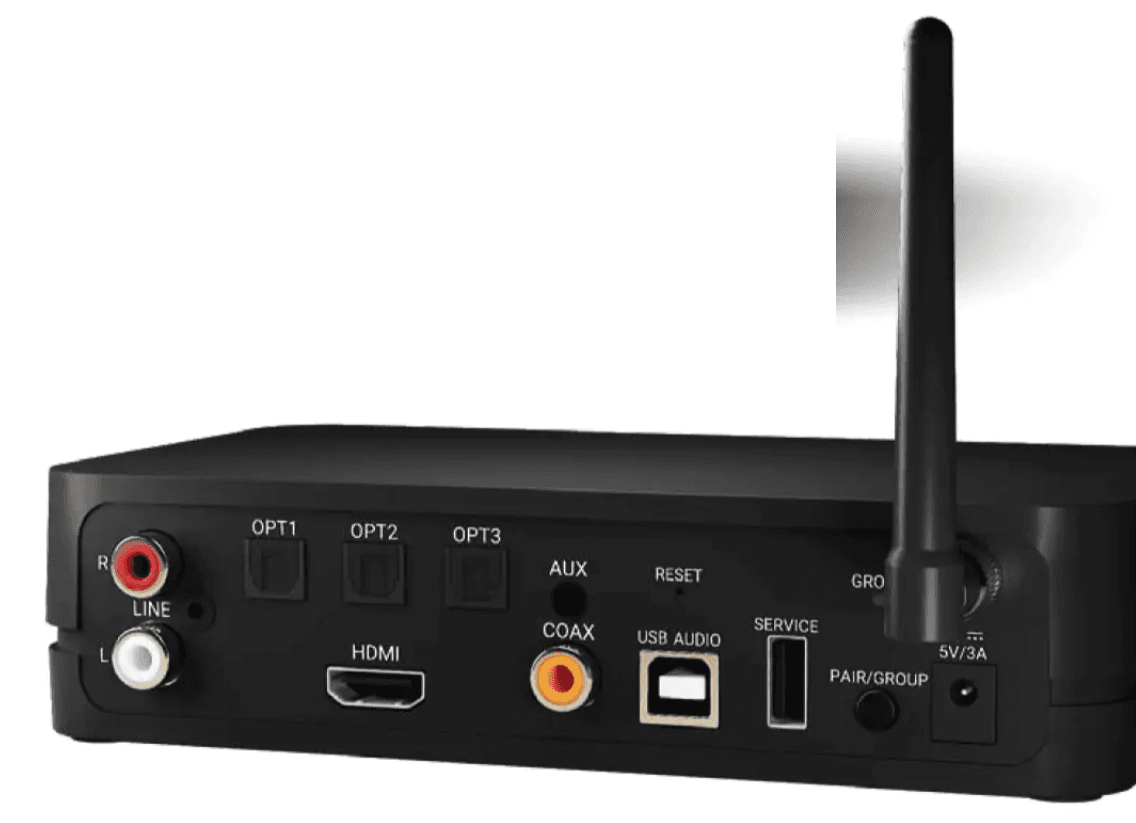
THE DEVELOPER
Roger Kessler heads the Research and Development department at Piega. He steps into the big shoes of Kurt Scheuch, who, as co-founder of Piega, shaped the technical aspects of the speakers from Lake Zurich over decades. The trained electrical engineer Kessler – “of course I built upon the work of Kurt Scheuch” – has already elevated the grand Coax series to the “Gen2” evolutionary stage. Now he is putting his stamp on the Premium Wireless Gen2 converters. Modestly, he outlines his work at the traditional Horgen company: “My team and I have optimized one or two details after all”. Massive but charming understatement à la Suisse. Because, of course, Kessler has had a decisive share in the sonic progress. The next act: the great Master Line Source 2 Gen2.
MEASUREMENT LAB
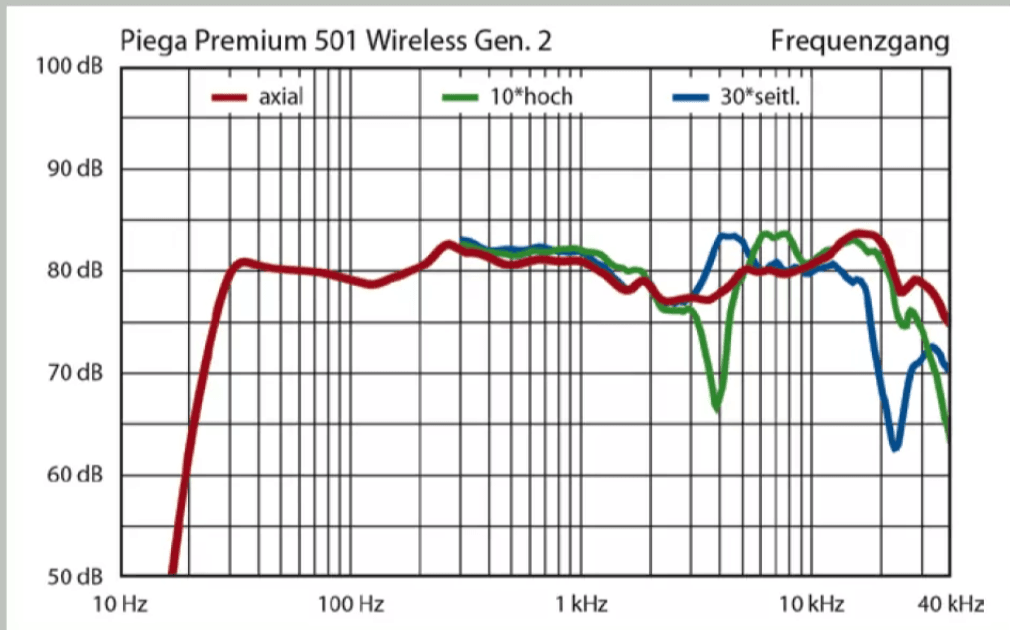
Frequency response on axis: balanced with slight presence dip and emphasis on the highest highs; deep-reaching bass in “free” setting (27 Hz/-3 dB; 25 Hz/-6 dB); two-stage bass reduction for wall or corner placement. Narrowband, direction-dependent interferences between 4 and 6 kHz. Wide sound dispersion, little treble bundling (blue, 30 degrees sideways). Frequency response and distortion in room: low-distortion mids; increased distortion in the deep bass and highs; from 90 dB SPL an electronic limiter prevents hard distortions; maximum level 86 dB SPL with full deep bass or 96 dB at 90 Hz. With wireless control via Connect Plus, slightly increased input signal delay of 25 ms. Power consumption controller/speaker pair: 4/26 W.
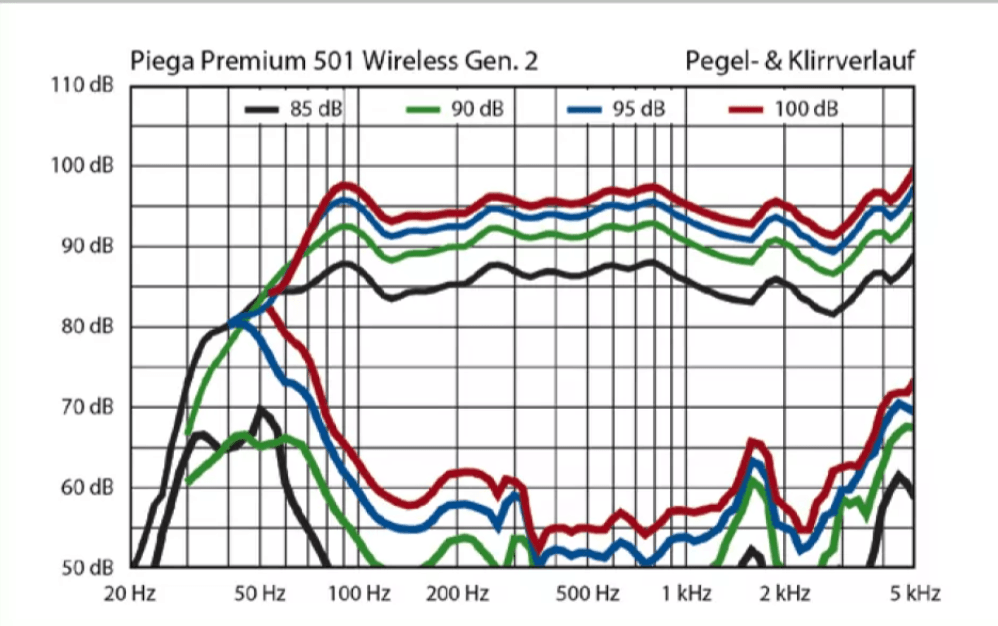
Specs
- Distributor: Piega
- Price (Pair): From 5,950 Euros (~$6,480 USD)
- Warranty: 2 years
- Dimensions (W x H x D): 16.0 x 101.0 x 21.0 cm
- Weight: 22 kg
- Finish: Lacquer
- Colors: Aluminum silver, white, black
- Design Principle: Three-way, closed
- Room Adaptation: Yes
- Special Features: Active Wireless
Verdict
The Piega Premium 501 Wireless Gen2 adds a truly serious high-end character to the once somewhat grimy business of wireless speakers with DSP and switching amplifiers. Without sacrificing all the conveniences of the wireless all-rounders, they and their sisters show how well such speakers can be tuned for demanding listeners.
The Swiss have put noble design, modern connectivity, and refined sound into an even finer vessel compared to the first generation.
Audiogram (Review Summary):
Pros:
- Wonderfully neutral and surprisingly deep-reaching sound, great app
Cons:
- Volume limits present, Piega Control Plus required for full functionality
Evaluation:
- Neutrality (2x weight): 95 → 9.5/10
- Detail Accuracy (2x weight): 95 → 9.5/10
- Localization (Sound Positioning): 90 → 9/10
- Spatiality: 95 → 9.5/10
- Microdynamics: 95 → 9.5/10
- Maximum Volume: 85 → 8.5/10
- Bass Quality: 85 → 8.5/10
- Bass Depth: 90 → 9/10
- Build Quality: Outstanding → 10/10
Final Score:
- Sound Rating: 92 points → 9.2/10
- Price/Performance: Outstanding



